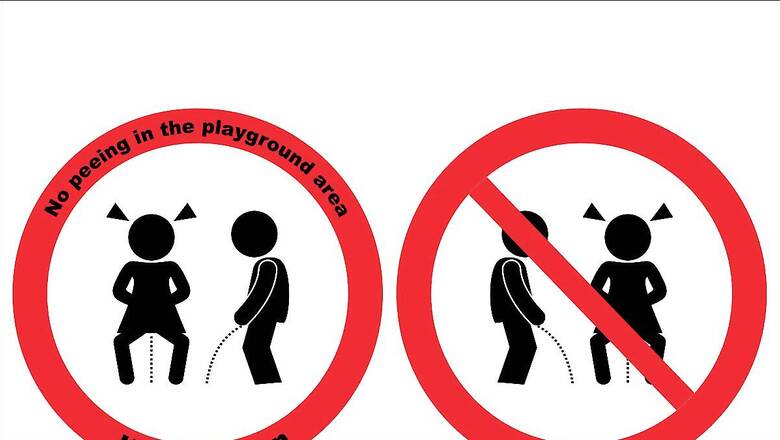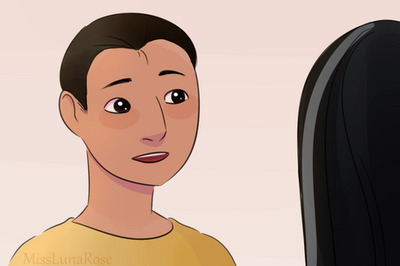
views
When it comes to equipping our children with life skills, perhaps one of the most important habits parents can instil are hygiene habits. Particularly in India, where we still battle communicable diseases, teaching children good hygiene not only keeps them healthier, but also keeps them from missing out on school and other activities they love, because of illnesses.
When children are healthy and happy, families are too. Parents and other siblings are also safer when children take care to wash their hands, practise good toilet etiquette, and keep the toilet clean. The great news is that like all habits taught early, good toilet hygiene becomes second nature when taught early enough. Think about it. When was the last time you didn’t wash your hands after using the toilet? If you can’t remember when, then you have your parents to thank for it.
Understanding Toilet Etiquette
Most new parents oscillate between surprise at what their children don’t find dirty (drinking bath water), and surprise at what they do (sharing a spoon with their sibling). Children need specific instruction, and often, reasons behind those specific instructions. For instance, it’s not enough to ask children to brush their teeth, when the habit is still settling in. The parent needs to supervise, and correct children (lovingly!) when they take too much or too little toothpaste, brush for too little time, or don’t pay enough attention to their molars.
Similarly, there are a number of other toilet and hygiene habits that need the same sort of specificity and repetition.
- Flushing and Disposal: Children should be taught to flush the toilet after use to keep the restroom clean and ready for the next person. This includes flushing the toilet only after the toilet lid is shut (to avoid the dreaded toilet plume!) Additionally, they should learn the appropriate way to dispose of sanitary products and toilet paper to avoid clogging and maintain hygiene.
- Proper Handwashing: One of the most fundamental aspects of toilet etiquette is proper handwashing after using the toilet. Teaching children the correct handwashing technique, such as using soap and water for at least 20 seconds, can significantly reduce the spread of germs and prevent illnesses.
- Hygienic Practices in Public Toilets: Teaching children about maintaining good hygiene even in public toilets is crucial. Encouraging them to use toilet seat covers or toilet paper, and to avoid touching surfaces can reduce the risk of contracting infections.
- Respecting Personal Space: Instilling the value of respecting personal space in restrooms is essential for fostering a positive and comfortable environment. Children should understand the significance of waiting for their turn and giving others privacy in the restroom.
- Leading by Example: Children often learn by imitating adults. Parents and caregivers should set a positive example by practising good toilet etiquette themselves. This way, children are more likely to adopt these habits and maintain them throughout their lives.
- Reinforcing Positive Habits: Consistent positive reinforcement is essential for building lasting habits. Praising children when they display good toilet etiquette and explaining the benefits of their actions will motivate them to continue practising cleanliness.
- Inclusion of Toilet Etiquette in School Curricula: Educational institutions can play a significant role in promoting toilet etiquette. By including lessons on personal hygiene and cleanliness in their curricula, schools can ensure that children receive consistent guidance on these vital practices.
- Creating Awareness: Introducing toilet etiquette to children at an early age involves creating awareness about the importance of cleanliness and the impact of unhygienic practices on health. Parents, teachers, and caregivers must play an active role in teaching children the significance of maintaining clean and sanitised toilets.
Parents aren’t alone in this. Even the GoI acknowledges the importance of talking to children about toilet hygiene and sanitation when they are young.
Swachh Bharat Mission and Beyond: Educating Children on Toilet Hygiene
In the aftermath of the Swachh Bharat Mission, India has made significant progress in improving access to toilets. However, the focus has now shifted to promoting good toilet hygiene and sanitation practices, which continue to be a challenge. Many individuals still view toilets as unnecessary, and changing this mindset has proven to be a gradual process.
Fortunately, the Sub-Group of Chief Ministers on Swachh Bharat Abhiyaan has found that children can be powerful agents of change. Young people are not only more receptive to the message of the Swachh Bharat Mission but also serve as enthusiastic ambassadors of change within their families and communities: children who grow up using toilets, for instance, never prefer the ‘outdoors’.
Harpic, India’s leading brand in the lavatory care segment, recognises the impact children can have and has directed its most thought-provoking campaigns and outreach programs towards them. Harpic has also partnered with News18 in the Mission Swachhta aur Paani Initiative, which has, for 3 years now, championed the cause of inclusive sanitation where everyone has access to clean toilets. It advocates equality for all genders, abilities, castes and classes and strongly believes that clean toilets are a shared responsibility.
Under the aegis of Mission Swachhta aur Paani, Harpic partnered with Sesame Workshop India, an educational non-profit working for the early developmental needs of young children, to promote positive sanitation, hygiene knowledge and behaviours among children and families through schools and communities, engaging with 17.5 million children across India. This, in addition to the messaging they already aimed at adults.
In addition to creating programming aimed at young children, Mission Swachhta aur Paani also pioneered a programme to raise awareness and reinforce healthy toilet and bathroom habits among young children, developing and recognising them as “Swachhta Champions”. As a part of the Swachhta ki Paathshaala initiative this year, well known actor and celebrity mom Shilpa Shetty visited the Primary School Naruar in Varanasi, to talk to children about good toilet habits, hygiene and its link to good health.
In addition to outreach programs, Mission Swachhta aur Paani is also fueling change by empowering parents. It is a valuable repository of information on nearly every topic on toilets and sanitation. If there is a toilet and hygiene related topic you want to talk to your children about, you’ll find the resources you’ll need here.
Parenting isn’t easy. Parents carry a lot of responsibility on their shoulders – keeping their children safe being the top priority amongst them. Safety can look like a lot of things, and often it takes the form of the most mundane of habits, and in the most mundane of places: the toilet.



















Comments
0 comment